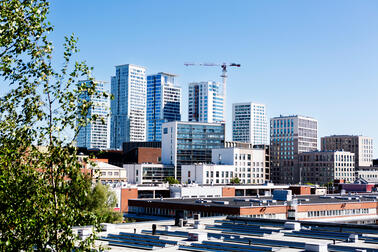Helsinki facts and figures is a compact statistical booklet published on an annual basis that covers key figures about Helsinki and its inhabitants. The pocket-size publication is a collection of indicators of e.g. the environment, population, housing and construction, education, economy, transport, tourism and administration.

The updated edition of the statistical package has now been released in Finnish, Swedish and English.
Some samples from the pocket statistics:
- Almost 34% of the land area in Helsinki is green areas administrated by the City. There are 71 conservation areas with a combined surface area of 1,350 hectares.
- Some 70% of the Helsinki area is sea area. The shoreline is 131 kilometres long and there are 327 islands.
- Last year, the air quality in Helsinki centre was deemed good or satisfactory during about 95 percent of the hours.
- The highest recorded temperature in 2022 was 29.5 °C (June 27) and lowest -17.6 °C (January 11).
- The largest age group is 30-34-year-olds, which comprises 62,984 Helsinki residents.
- Some 18% of the Helsinki residents speak a foreign language as their mother tongue. The most common group of foreign-language speakers is Russian speakers, of which there are 20,502 living in Helsinki.
- The Helsinki Central Library Oodi had 1,820,297 visits in 2022. All in all, there were 45 library borrowing locations and 8.8 million borrowings made in 2022.
- In 2022, Helsinki awarded €23 million in grants for arts and culture. Sports associations and groups were supported with grants amounting to €15 million.
- In Helsinki, there are 34 beaches, 21 winter swimming places, 13 ice stadiums, 16 swimming halls and outdoor pools, 812 indoor sports facilities and 92 dog parks. There are 1,300 kilometres of bicycle routes.
- Last year, 6,394 housing units were completed in Helsinki. The combined floor area of all the buildings was about 645,000 square metres.
- The City of Helsinki employs all told 37,513 people. The most common occupational titles were practical nurse and child nurse in early childhood education. Approximately 40 percent of all municipal employees work for the Social Services and Health Care Division.
Explore the topic


